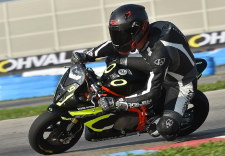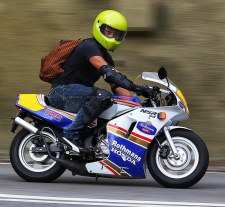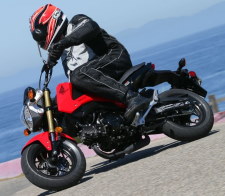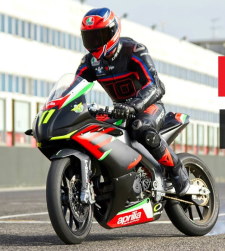I spent a good amount of time pulling together specs for various MiniGP / SuperMoto bikes (i.e., smaller motorcycles). I think seeing the numbers compared to other options out there really helps put these tiny, small, and small-ish bikes into better context. I’ve grouped them into size classes by length and then sorted them by weight. If you know of any of the missing specs, pass them on and I will update this list.
Very Small

Yamaha PE50 2 cycle
2 HP (~25 mph)
90 lb
49″ length
19″ seat height
Honda CRF50
2.5 HP
110 lb. wet
? length
21.6″ seat height
Yamaha TTR50E 4 cycle
2.5 HP (~32 mph)
128 lb. wet
51.4″ length
21.9″ seat height
Small

Ohvale GP-0 110 Automatic / Manual 4 speed
8 HP / 11 HP
141 lb
57.9″ length
25.3″ seat height
Ohvale GP-0 190
25 HP
150 lb
57.9″ length
Medium
YFC SM F190
? HP
154 lb.
66.1″ length
31.5″ seat height

Yamaha TTR 110
7 HP (~50 mph)
159 lb. wet
61.6″ length
26.4″ seat height
Honda NSR50 (2004)
7.2 HP
161 lb.
62.2″ length
Honda NSF100 (2006)
9 HP & 5.9 ft-lb
165 lb. wet
61.6″ length
Kawasaki KLX110R
7 HP
167 lb.
61.4″ length
26.8″ seat height
Ohvale GP-2 190
25 HP
167 lb. dry
63.4″ length
28.5″ seat height

KAYO MR150
11 HP
187 lb. dry
61.2″ length
26.3″ seat height
Honda Grom
9.7 HP
231 lb
69.3″ length
30″ Seat height
Full Size
Aprilia RS50
? HP
197 lb dry
77.3″ length
32″ seat height

Aprilia RS250 SP (2022)
30 HP
231 lb dry
78″ length (1995-2004)
Kawasaki Ninja 400
44 HP & 25 ft-lb
366 lb
78.3″ Length
30.9″ Seat height



